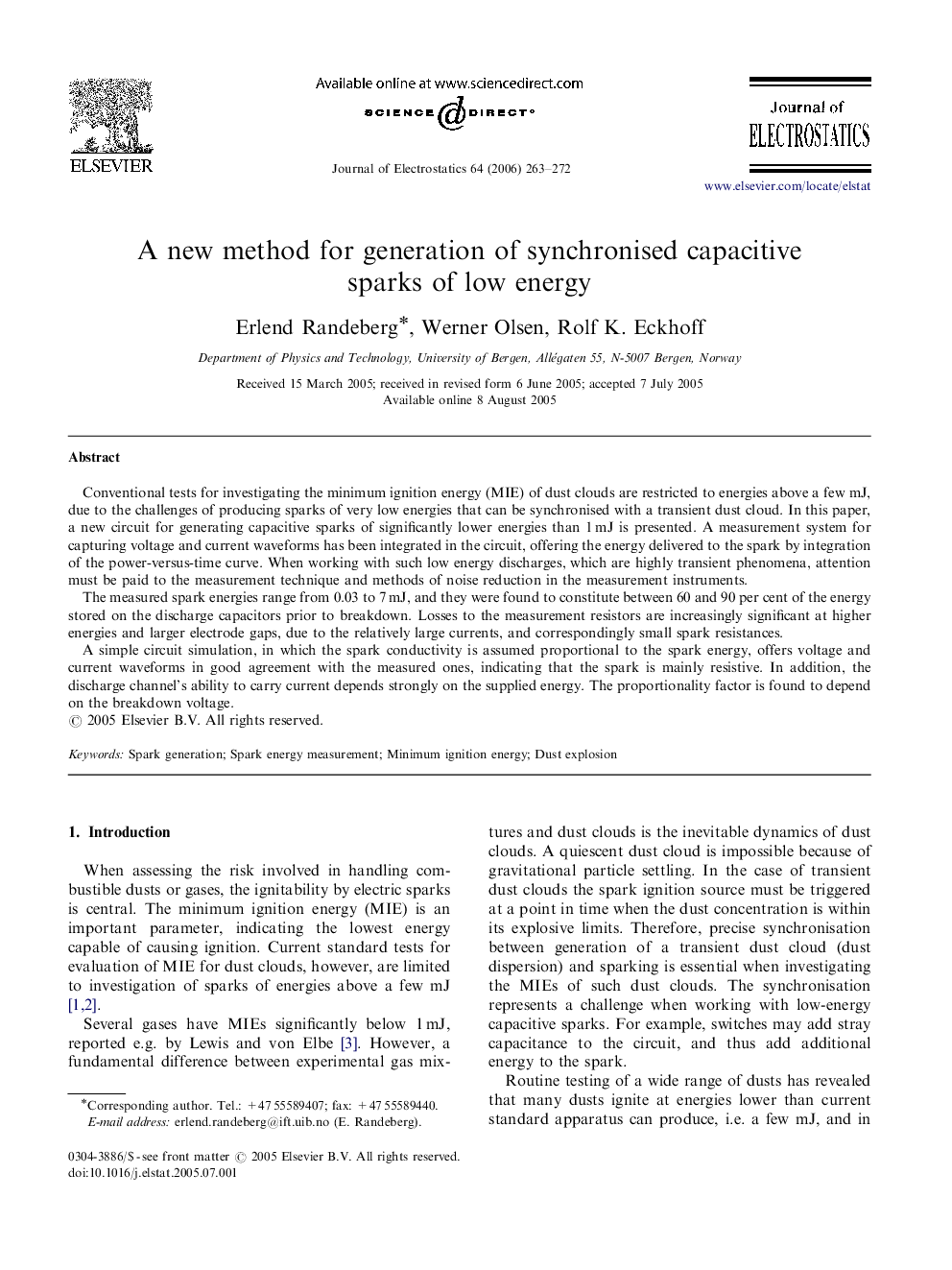| Article ID | Journal | Published Year | Pages | File Type |
|---|---|---|---|---|
| 726148 | Journal of Electrostatics | 2006 | 10 Pages |
Conventional tests for investigating the minimum ignition energy (MIE) of dust clouds are restricted to energies above a few mJ, due to the challenges of producing sparks of very low energies that can be synchronised with a transient dust cloud. In this paper, a new circuit for generating capacitive sparks of significantly lower energies than 1 mJ is presented. A measurement system for capturing voltage and current waveforms has been integrated in the circuit, offering the energy delivered to the spark by integration of the power-versus-time curve. When working with such low energy discharges, which are highly transient phenomena, attention must be paid to the measurement technique and methods of noise reduction in the measurement instruments.The measured spark energies range from 0.03 to 7 mJ, and they were found to constitute between 60 and 90 per cent of the energy stored on the discharge capacitors prior to breakdown. Losses to the measurement resistors are increasingly significant at higher energies and larger electrode gaps, due to the relatively large currents, and correspondingly small spark resistances.A simple circuit simulation, in which the spark conductivity is assumed proportional to the spark energy, offers voltage and current waveforms in good agreement with the measured ones, indicating that the spark is mainly resistive. In addition, the discharge channel's ability to carry current depends strongly on the supplied energy. The proportionality factor is found to depend on the breakdown voltage.
